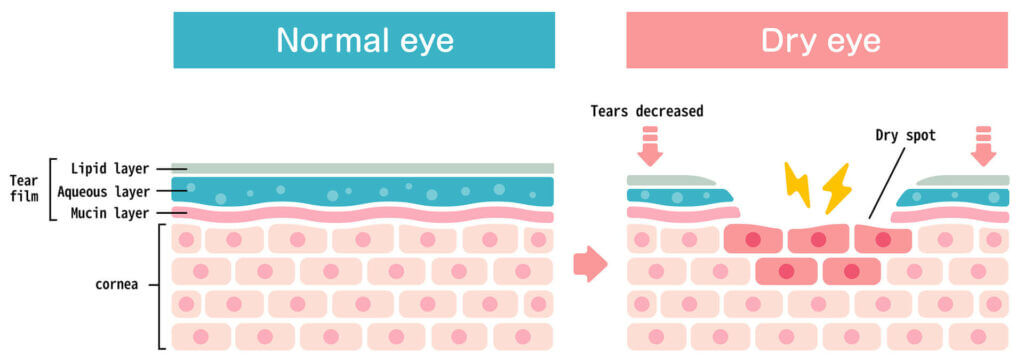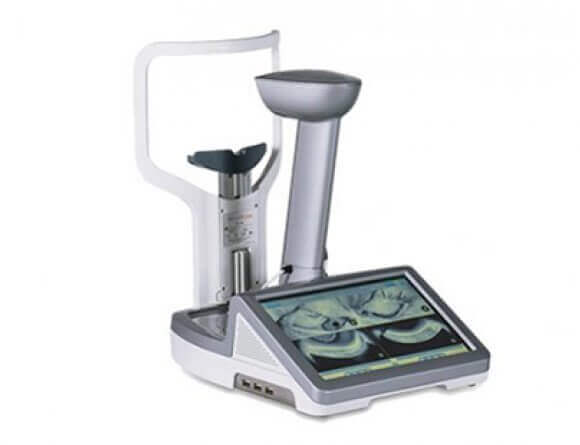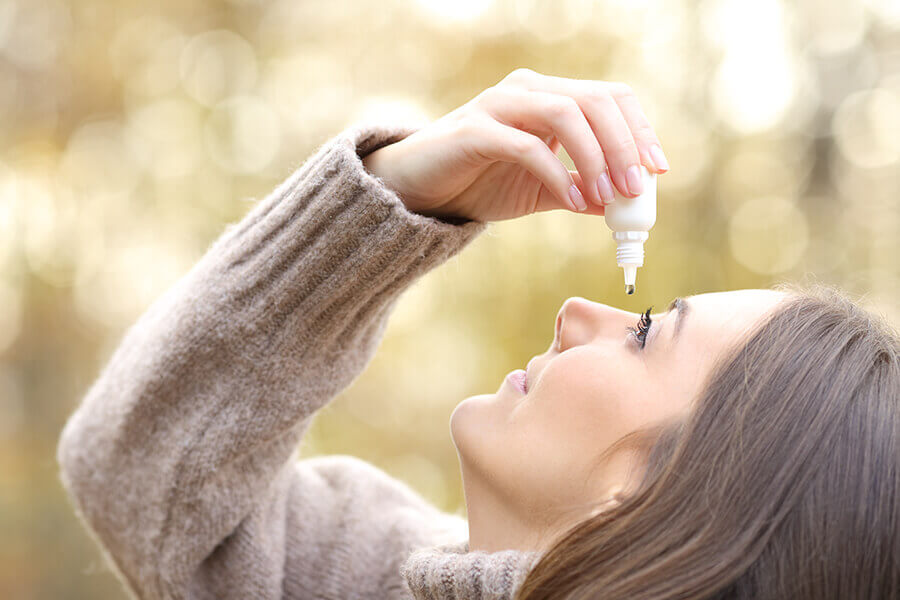Dry Eye Treatment
Understanding Dry Eye Syndrome
Are you suffering from dry eyes in Indiana?
According to the (AAO), dry eye syndrome is a condition that affects as many as 12 million people in the United States. Many eye doctors have even been quick to refer to this as a modern day health care epidemic.

About Dry Eye Disease
Dry eye disease, also known as dry eye syndrome or keratoconjunctivitis sicca, is a condition in which the eyes do not produce enough tears, or the tears evaporate too quickly. This can cause irritation, redness, and discomfort in the eyes. Dry eye disease is a common condition that can occur at any age, but it is more common in older adults, especially women. It can be caused by a variety of factors, including certain medications, hormonal changes, certain health conditions, and environmental factors. Dry eye disease can usually be treated with a combination of lifestyle changes, such as using a humidifier and avoiding dry environments, and over-the-counter or prescription eye drops.
Normal, healthy eyes are continuously covered by a thin tear film. This film allows people to be able to see more clearly. Your eyes normally make small amounts of tears all day long. Tears play several important roles in keeping your eyes healthy and your vision clear. Tears lubricate the eye’s surface, wash away debris, and provide a smooth surface to help keep your vision clear. They also contain natural antibiotics that keep your eyes safe from germs that might cause infections.
Tears are made up of three layers:
- Lipid (oil) layer: lubricates and prevents evaporation
- Aqueous (water) layer: nourishes and protects the cornea
- Mucin layer: adheres tears to the eye
The eyelid glands called Meibomian glands create the lipid (oil) layer of the tear film.

Evaporative Dry Eye disease is most often caused by a blockage or obstruction in the eyelid glands, which can lead to a lipid deficiency in the tears.
Dry Eye Diagnostics & Treatments
We have Lipiflow, Lipiscan, TearLab, Ocusoft Products, Serum Tears through Vital Tears
Tearlab Diagnostics:
The TearLab Osmolarity System* is intended to measure the osmolarity of human tears to aid in the diagnosis of dry eye disease in patients suspected of having dry eye disease, in conjunction with other methods of clinical evaluation.
LipiScan Diadnostics:
A Precise Diagnosis of Meibomian Gland Dysfunction

Your eye doctor will perform a thorough clinical exam to diagnose MGD, and the revolutionary LipiScan device upgrades the diagnosis with high definition imaging technology.
LipiScan, from Johnson & Johnson Vision, enables your eye care specialist to view the health of your meibomian glands with optimum accuracy. This diagnostic tool has changed the way medicine diagnoses dry eye syndrome. With efficiency and versatility, LipiScan is a small and lightweight device with a comfortable patient experience. Quick and painless, the procedure takes about one minute to image both lower eyelids.
Lipiflow for Dry Eye Syndrome
The new LipiFlow treatment addresses the root cause of evaporative dry eye by unblocking the meibomian glands that secrete oily lipids. In controlled clinical studies of patients who received a single LipiFlow treatment, the average meibomian gland score at 4 weeks increased by two to three times over the baseline condition, which reflects improvement in the number of glands secreting and secretion quality. Additionally, at four weeks after the LipiFlow treatment, 79% of patients reported improvement in dry eye symptoms.
Eye Drops

The use of artificial teardrops is a common treatment for dry eye but not always effective. Many over the counter eye drops are not worth anything but may give some temporary relief. No one drop works for everyone, so you might have to experiment to find the drop that works for you. If you have chronic dry eye, it is important to use the drops even when your eyes feel fine, to keep them lubricated. We use Serum Tears from Vital Tears at our practices.
